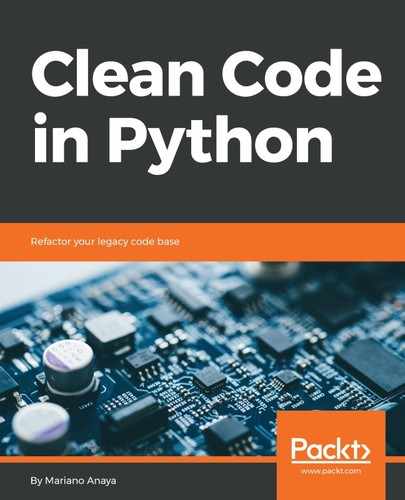In Python, as in other languages, some data structures or types support accessing its elements by index. Another thing it has in common with most programming languages is that the first element is placed in the index number zero. However, unlike those languages, when we want to access the elements in a different order than usual, Python provides extra features.
For example, how would you access the last element of an array in C? This is something I did the first time I tried Python. Thinking the same way as in C, I would get the element in the position of the length of the array minus one. This could work, but we could also use a negative index number, which will start counting from the last, as shown in the following commands:
>>> my_numbers = (4, 5, 3, 9)
>>> my_numbers[-1]
9
>>> my_numbers[-3]
5
In addition to getting just one element, we can obtain many by using slice, as shown in the following commands:
>>> my_numbers = (1, 1, 2, 3, 5, 8, 13, 21)
>>> my_numbers[2:5]
(2, 3, 5)
In this case, the syntax on the square brackets means that we get all of the elements on the tuple, starting from the index of the first number (inclusive), up to the index on the second one (not including it). Slices work this way in Python by excluding the end of the selected interval.
You can exclude either one of the intervals, start or stop, and in that case, it will act from the beginning or end of the sequence, respectively, as shown in the following commands:
>>> my_numbers[:3]
(1, 1, 2)
>>> my_numbers[3:]
(3, 5, 8, 13, 21)
>>> my_numbers[::]
(1, 1, 2, 3, 5, 8, 13, 21)
>>> my_numbers[1:7:2]
(1, 3, 8)
In the first example, it will get everything up to the index in the position number 3. In the second example, it will get all the numbers from the position 3 (inclusive), up to the end. In the second to last example, where both ends are excluded, it is actually creating a copy of the original tuple.
The last example includes a third parameter, which is the step. This indicates how many elements to jump when iterating over the interval. In this case, it would mean to get the elements between the positions one and seven, jumping by two.
In all of these cases, when we pass intervals to a sequence, what is actually happening is that we are passing slice. Note that slice is a built-in object in Python that you can build yourself and pass directly:
>>> interval = slice(1, 7, 2)
>>> my_numbers[interval]
(1, 3, 8)
>>> interval = slice(None, 3)
>>> my_numbers[interval] == my_numbers[:3]
True
Notice that when one of the elements is missing (start, stop, or step), it is considered to be none.
